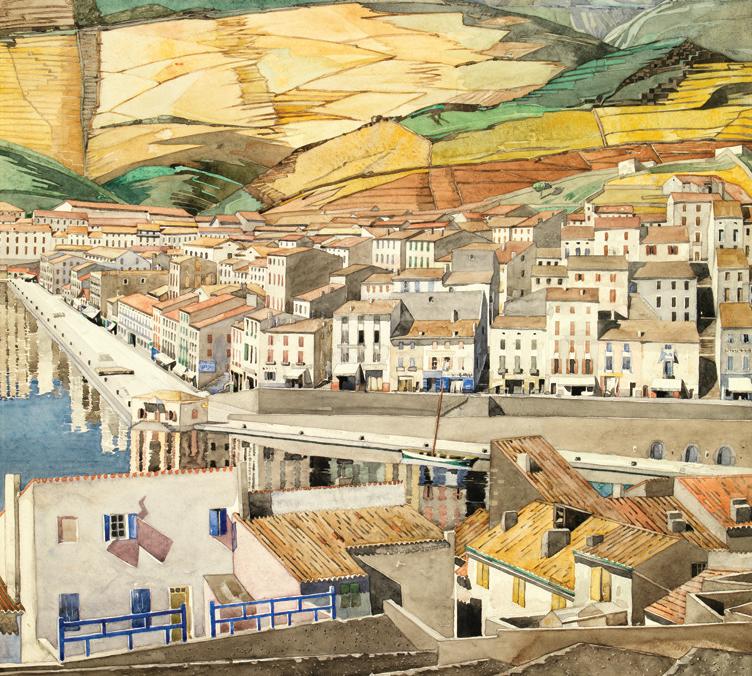
2 minute read
We Built this City
ON VIEW
SEPTEMBER 11 WEAVING Through December 2021
Advertisement
Opposite: Marilyn Y. Scott, Diné born Blue Canyon, Arizona 1983; lives Tuba City, Arizona, September 11 Weaving aniline dye on wool 87 ¼” x 119” x ¼” Albuquerque Museum purchase PC2021.39.1
Below: Ruben Olguin, born Santa Fe; lives Bernalillo, Treeflow, 2021, clay with acrylic sealant installation made possible by the Albuquerque Museum Foundation
grandfather who started it in 1939, contacted the Museum last year to offer the work. “It is a stunner, in scale, vision, and ambition,” says Kim. “You have to see it in person.” The weaving will be on display in the hallway outside Common Ground through the end of the year.
New Mural in Resourceful Treeflow, created by artist Ruben Olguin, is now on view in the Resourceful gallery in Only in Albuquerque. Olguin works in ceramic, video, sound, and adobe, exploring the nature of time and ancient materials. The earthwork mural documents climate change along the Middle Rio Grande watershed, stretching from Cochiti to Belen. Through US Geological Survey data, Olguin researched drought cycles over the past 530 years and represented the dry and wet cycles in the width of the rings. He then harvested clay from the riverbed and applied it over a vinyl stencil. After the mud dried, he peeled away the vinyl, revealing the waterways and leaving the rings intact. The width and the color of the rings are an organic history of climate: “Clay holds the memory of the movement of water and references the spaces that the river carves,” Olguin says. The clay’s colors reflect the history of the river valley. Browns and red show times of heat and drought, whereas the yellow, green, and purple indicate cooler periods and rain. Olguin says that the purpose of the mural is to expose the fragility of the river’s flow.

Brooks Studio, Organized Crafts of Albuquerque at the Tingley Beach Bathhouse, ca. 1937, gelatin silver print, gift of Channell Graham, PA1978.152.208
We Built this City
THE “ORGANIZED CRAFTS OF ALBUQUERQUE” WAS AN ASSOCIATION MADE UP SPECIALIZED LABOR UNIONS
including the painters union, carpenters union, bricklayers union, steel workers union, and common labor union. The labor movement was a strong force, politically, in the first half of the 20th Century, and Albuquerque’s labor unions were especially strong and outspoken. They were not afraid to make sure their members were heard in every sphere of politics.
Albuquerque’s loyal political leader, Clyde Tingley, was friendly with the labor unions, himself being a laborer in his younger years. He persuaded the local unions to donate their time to build a large bathhouse at the newly-completed Civil Works Administration project, Conservancy Beach (now called Tingley Beach) which opened in August of 1931. This photograph, along with others focused on the construction history of Albuquerque, will be included in an upcoming photo archives exhibition, We Built This City.
PHOTO ARCHIVES EXHIBITION COMING IN 2022
Preview a selection of images at
albuquerque.emuseum.com
and click on Collections







